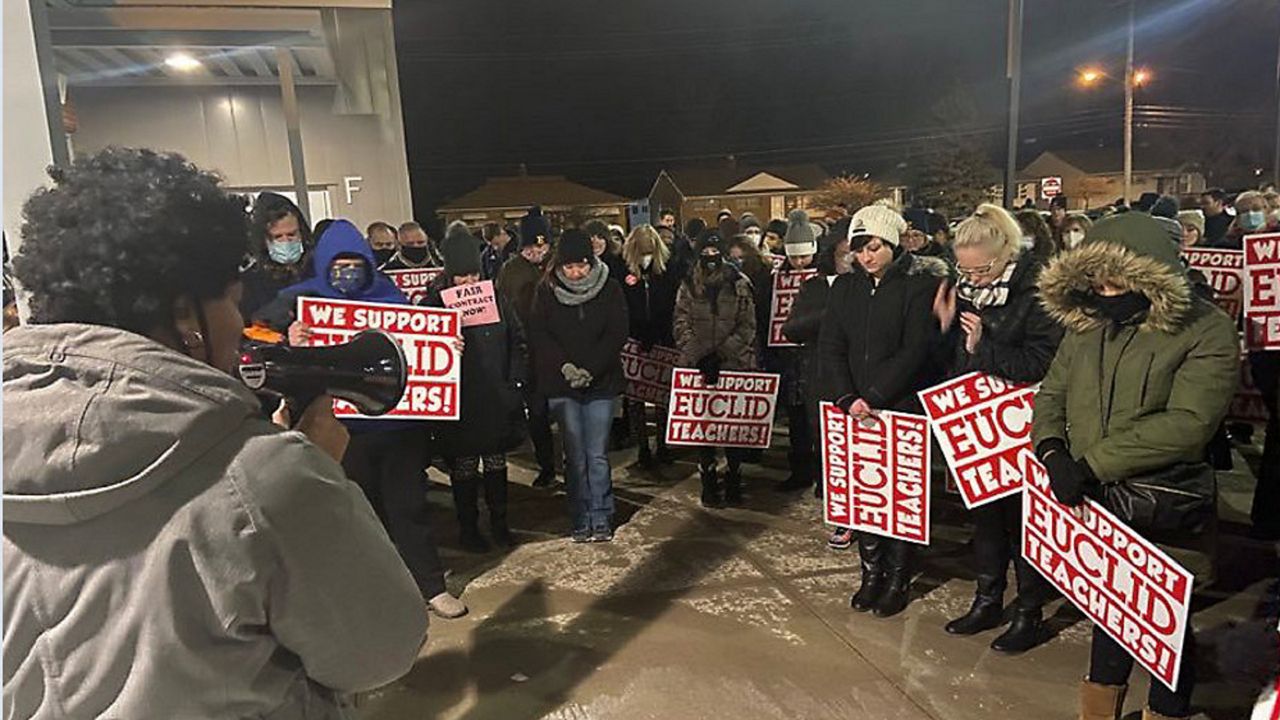OHIO – Teachers at Euclid City Schools have been working without a contract since the start of the school year, with many expressing their frustration.
On Wednesday evening, Euclid teachers organized a rally and a vigil at the Early Learning Village. One teacher, Josh Stephens, said going at this for weeks and months has drained his colleagues of their energy.
"It is difficult to focus on your job when you’re worried about whether your contract will be yanked out from under you," he said.
Stephens has been a teacher for 17 years and the language in the contract is a big concern for him, as he notes it gives the district the right to transfer teachers any time during the school year.
In a statement, the district's board of education has said its members are looking forward to a resolution.
"The Board has had 22 bargaining sessions with Euclid Teachers Association (ETA) union leaders and continues to work to reach an agreement," according to the board statement. "Although we started bargaining with other groups well after with ETA, we have reached an agreement with all of the other associations in the district – only the ETA agreement remains unresolved. Our next round of discussions is scheduled for January 19.”"
But the state of Ohio is no stranger to teachers’ strikes, and they have occurred over the years for a variety of reasons ranging from pay to pandemic protocols.
Perhaps the most well known teacher strike in the state is also the state’s longest-lasting and the nation’s second longest-lasting, according to an article by Ohio History Central. This would be the Ravenna Teachers’ Strike in the spring of 1981.
This strike made national headlines as it was — at the time — the longest U.S. teacher strike. The article states that the issues at the heart of this strike were “low wages, poor benefits, and lack of state funding." These are issues that still sit at the heart of many teacher complaints across the nation to this day.
According to the article, a number of teachers were apparently arrested as part of the protests, and the strike only ended when the board increased teacher wages. The article then states that the board decided to not renew the “contracts of 51 non-tenured teachers who had participated in the strike.”
Jumping ahead a few decades, there was the eight-week strike at Strongsville City Schools in March of 2013. The issues at the heart of this strike centered on many of the same complaints as Ravenna about 30 years prior: pension contributions, insurance premiums and pay increases, according to a Cleveland.com article from the time.
The article paints a picture of a tense several weeks of disagreement between the union and the board that brought in the whole community. Complaints were filed with the State Employment Relations Board on both sides, and the picket lines were intense when the district brought in substitute teachers to replace the striking staff.
Those who continue to work through a strike or who are brought on by the company to do so are called strikebreakers and are often referred derogatorily to as “scabs” by striking individuals.
The article states that these substitute teachers were met with anger by those on strike and that, “in one case, someone smashed the car window of a substitute teacher.” The strike eventually ended, according to the article, when the district restored frozen wages while teachers saw their insurance rates increase.
More recent teacher strikes have concerned issues related to COVID-19, such as with the Gahanna-Jefferson Public School District.
Teachers at this district cited concerns of safety and equity for their students in regards to the district’s hybrid learning plan, according to an Ohio Capital Journal article. In particular, teachers were concerned that the online students saw lessons via a camera at the back of the room that may offer a lesser learning experience.
The strike lasted four days, and a Columbus Dispatch article reported the strike had ended when the board and union came to an agreement that saw increased wages and unchanged health benefits in addition to shifts in COVID-19-era instruction.



